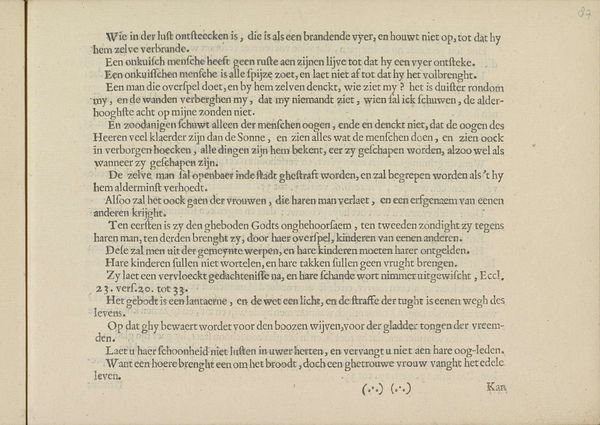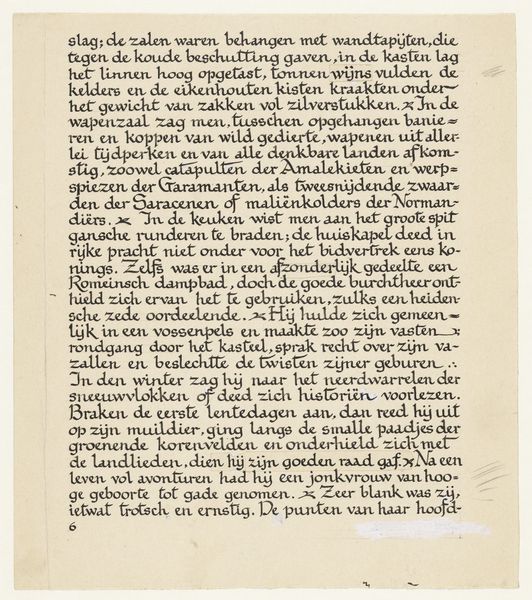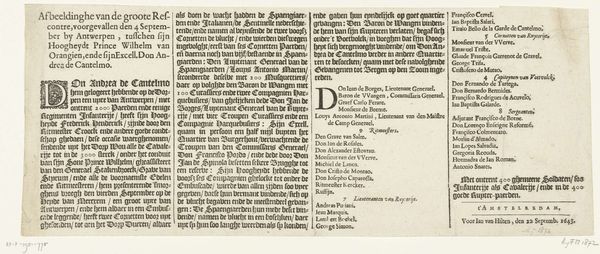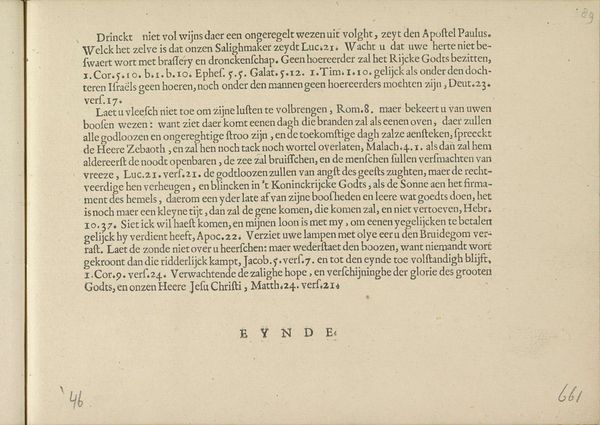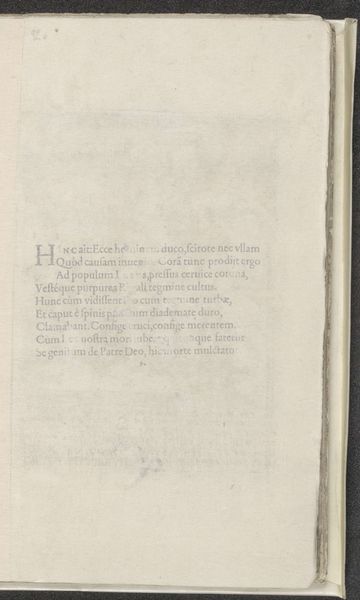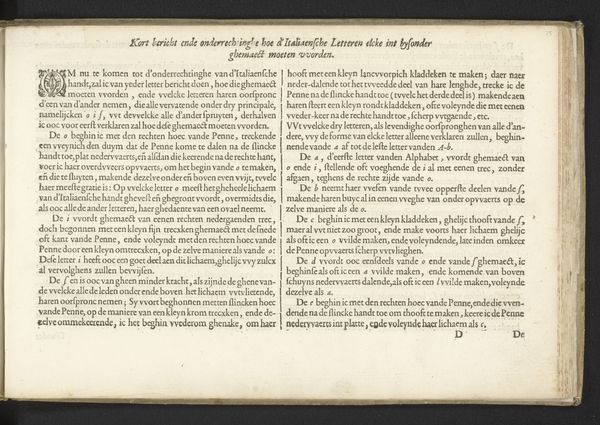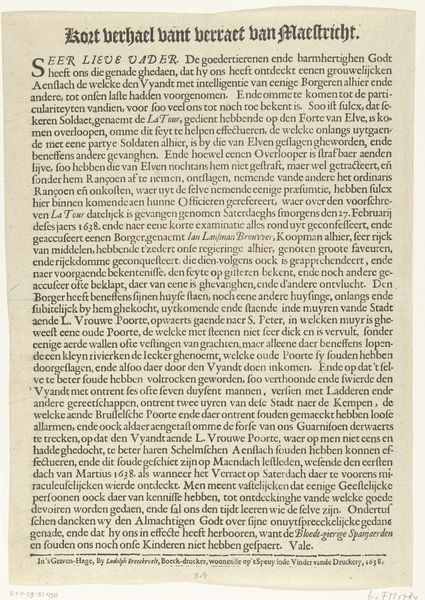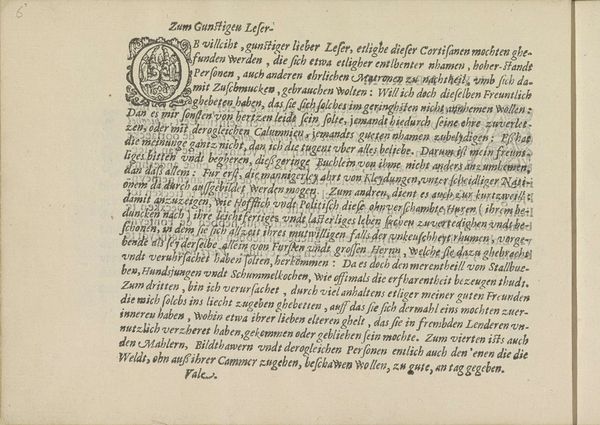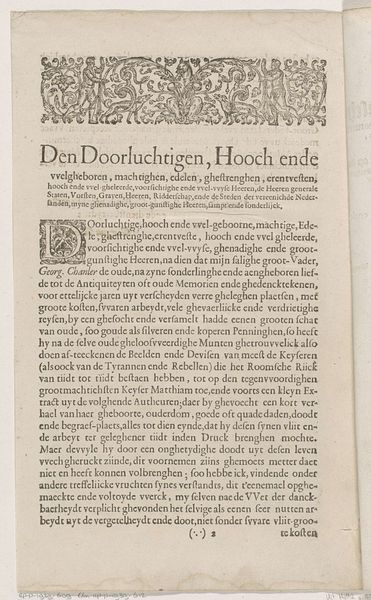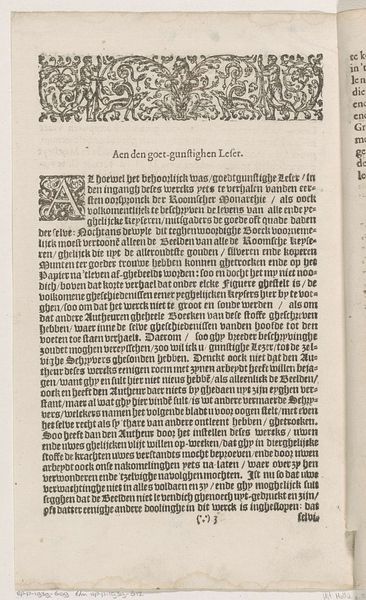
graphic-art, print, etching, textile, paper, engraving
#
graphic-art
# print
#
etching
#
textile
#
paper
#
engraving
Dimensions: height 140 mm, width 190 mm
Copyright: Rijks Museum: Open Domain
Curator: Look at this intriguing print from 1641, titled "Waarschuwing, pagina 4", crafted by Crispijn van de (II) Passe. It resides in the Rijksmuseum. Editor: My immediate impression is that the densely packed typography has an overwhelming effect. Curator: Absolutely, this etching and engraving, printed on paper, serves as a warning, which in Dutch is "waarschuwing". It pulls quotes from the Book of Proverbs. Can we examine how this textual piece reflects the broader social attitudes toward women and morality in 17th-century Dutch society? Editor: From a material perspective, consider how the act of printing itself disseminates these ideologies, shaping a collective understanding through the accessibility of the printed word. The textile, alluded to in one proverb as part of one’s attire and possessions, signals how craft traditions blend with didactic intent. Curator: Exactly! The chosen passages reflect anxieties surrounding infidelity, female agency, and the dangers of excess. This ties into a patriarchal structure prevalent at the time, and one finds it embedded throughout Dutch culture. Note that the warnings become part of broader attempts to regulate social behaviours, placing women under intense scrutiny. Editor: Moreover, let’s explore the labor inherent in creating this piece. From the engraver meticulously carving the metal plate to the printing press repeatedly churning out copies. The paper, a significant commodity itself, signifies resources being used to spread a specific message that's both classist and patriarchal. Curator: The way the "wisdom" from Proverbs is selectively utilized reinforces dominant social hierarchies while appearing as divine instruction is fascinating. The proverbs cautioning against "strange women" is, notably, quite pervasive. It's a form of control projected via a gendered morality. Editor: Thinking about accessibility for its audience raises intriguing questions too. How widely were such printed warnings consumed? Who was literate and able to interpret this specific blend of craft, text and instruction? Understanding the production process brings into focus questions of power. Curator: This text’s significance exists not just as aesthetic experience but for how it reproduces biases while seeming like universal, time-honoured truth. Thank you, it enriches understanding how complex intersections and social dynamics work with a tangible print piece such as this. Editor: Examining materiality as a vehicle helps highlight its potential of transmitting complex political views in simple material terms; seeing its broader impacts on 17th century attitudes of labor, capital and morality.
Comments
No comments
Be the first to comment and join the conversation on the ultimate creative platform.

